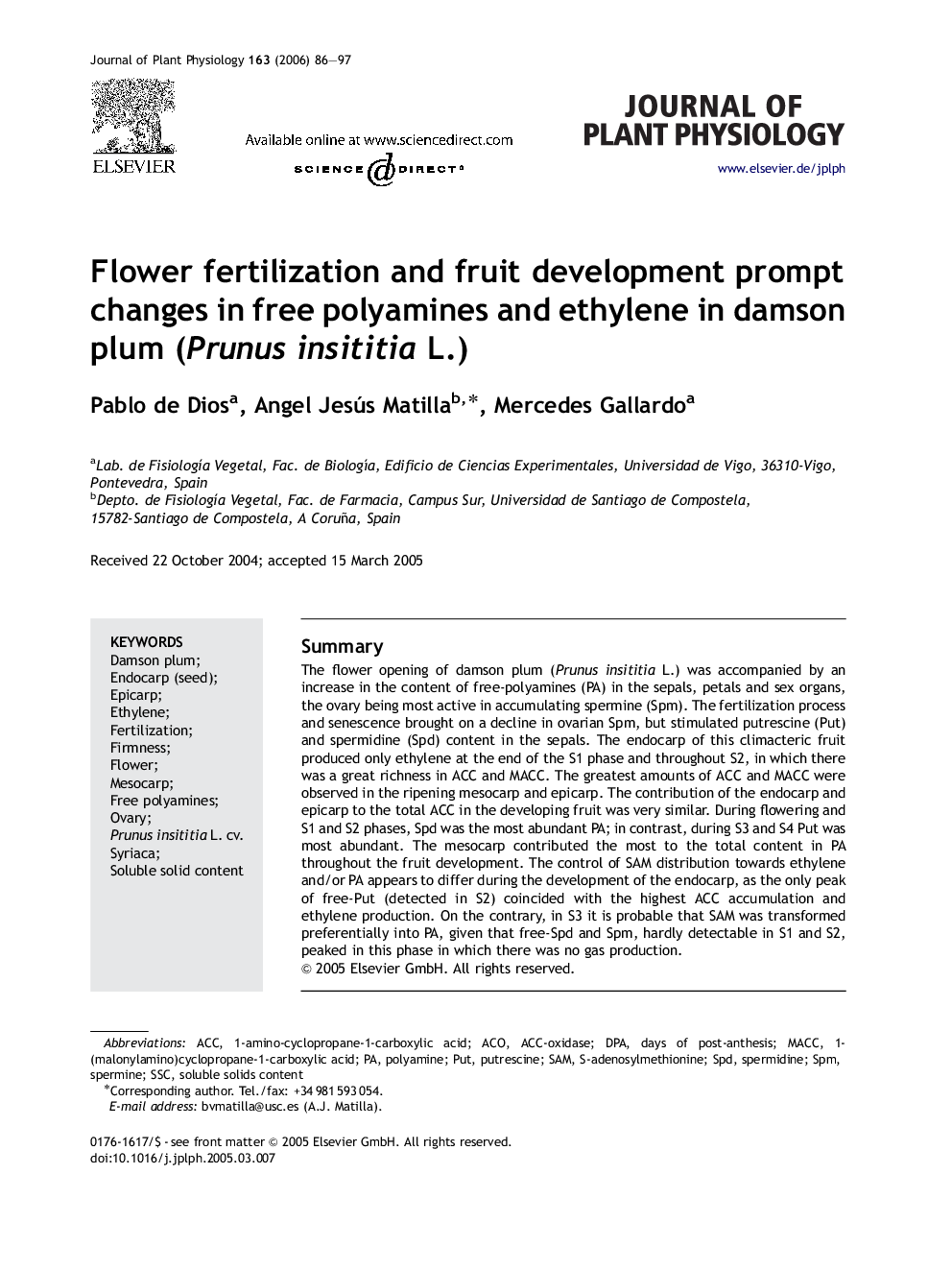| Article ID | Journal | Published Year | Pages | File Type |
|---|---|---|---|---|
| 2058084 | Journal of Plant Physiology | 2006 | 12 Pages |
SummaryThe flower opening of damson plum (Prunus insititia L.) was accompanied by an increase in the content of free-polyamines (PA) in the sepals, petals and sex organs, the ovary being most active in accumulating spermine (Spm). The fertilization process and senescence brought on a decline in ovarian Spm, but stimulated putrescine (Put) and spermidine (Spd) content in the sepals. The endocarp of this climacteric fruit produced only ethylene at the end of the S1 phase and throughout S2, in which there was a great richness in ACC and MACC. The greatest amounts of ACC and MACC were observed in the ripening mesocarp and epicarp. The contribution of the endocarp and epicarp to the total ACC in the developing fruit was very similar. During flowering and S1 and S2 phases, Spd was the most abundant PA; in contrast, during S3 and S4 Put was most abundant. The mesocarp contributed the most to the total content in PA throughout the fruit development. The control of SAM distribution towards ethylene and/or PA appears to differ during the development of the endocarp, as the only peak of free-Put (detected in S2) coincided with the highest ACC accumulation and ethylene production. On the contrary, in S3 it is probable that SAM was transformed preferentially into PA, given that free-Spd and Spm, hardly detectable in S1 and S2, peaked in this phase in which there was no gas production.
